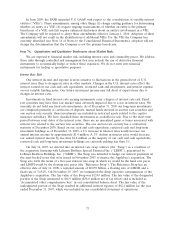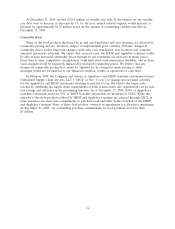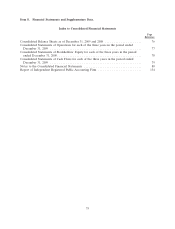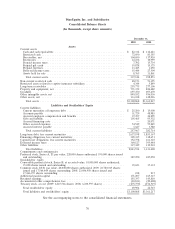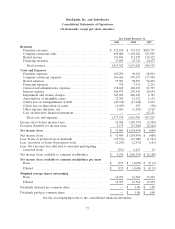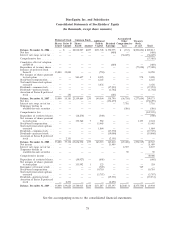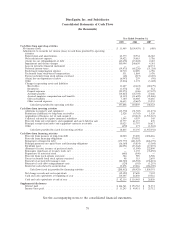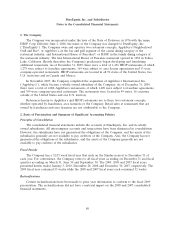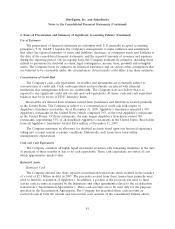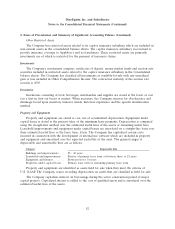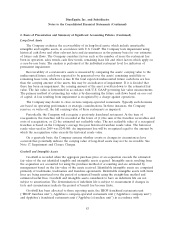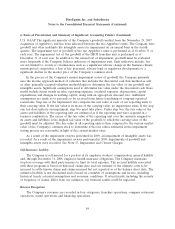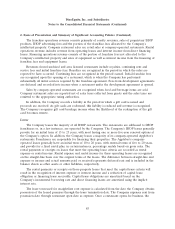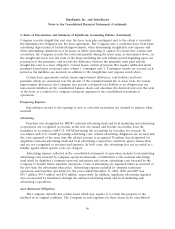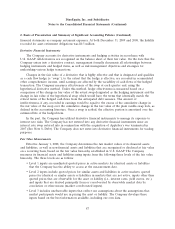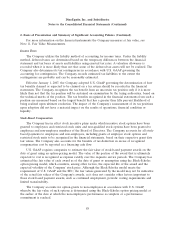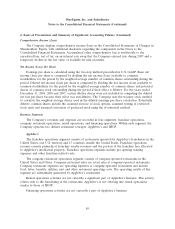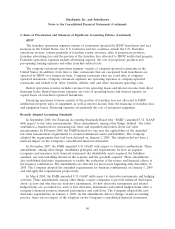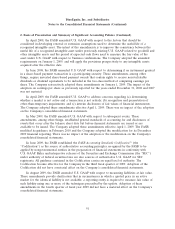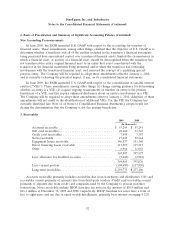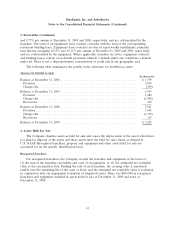IHOP 2009 Annual Report Download - page 102
Download and view the complete annual report
Please find page 102 of the 2009 IHOP annual report below. You can navigate through the pages in the report by either clicking on the pages listed below, or by using the keyword search tool below to find specific information within the annual report.DineEquity, Inc. and Subsidiaries
Notes to the Consolidated Financial Statements (Continued)
2. Basis of Presentation and Summary of Significant Accounting Policies (Continued)
Long-Lived Assets
The Company evaluates the recoverability of its long-lived assets, which include amortizable
intangible and tangible assets, in accordance with U.S. GAAP. The Company tests impairment using
historical cash flows and other relevant facts and circumstances as the primary basis for our estimates
of future cash flows. The Company considers factors such as the number of years the restaurant has
been in operation, sales trends, cash flow trends, remaining lease life and other factors which apply on
a case-by-case basis. The analysis is performed at the individual restaurant level for indicators of
permanent impairment.
Recoverability of a restaurant’s assets is measured by comparing the assets’ carrying value to the
undiscounted future cash flows expected to be generated over the assets’ remaining useful life or
remaining lease term, whichever is less. If the total expected undiscounted future cash flows are less
than the carrying amount of the assets, this may be an indicator of impairment. If it is decided that
there has been an impairment, the carrying amount of the asset is written down to the estimated fair
value. The fair value is determined in accordance with U.S. GAAP governing fair value measurements.
The primary method of estimating fair value is by discounting the future cash flows based on our cost
of capital. A loss resulting from impairment is recognized by a charge against operations.
The Company may decide to close certain company-operated restaurants. Typically such decisions
are based on operating performance or strategic considerations. In these instances, the Company
reserves, or writes off, the full carrying value of these restaurants as impaired.
Periodically, the Company will reacquire a previously franchised restaurant. At the time of
reacquisition, the franchise will be recorded at the lower of (1) the sum of the franchise receivables and
costs of reacquisition, or (2) the estimated net realizable value. The net realizable value of a reacquired
franchise is based on the Company’s average five-year historical franchise resale value. The historical
resale value used in 2009 was $240,000. An impairment loss will be recognized equal to the amount by
which the reacquisition value exceeds the historical resale value.
On a quarterly basis, the Company assesses whether events or changes in circumstances have
occurred that potentially indicate the carrying value of long-lived assets may not be recoverable. See
Note 17, Impairment and Closure Charges.
Goodwill and Intangible Assets
Goodwill is recorded when the aggregate purchase price of an acquisition exceeds the estimated
fair value of the net identified tangible and intangible assets acquired. Intangible assets resulting from
the acquisition are accounted for using the purchase method of accounting and are estimated by
management based on the fair value of the assets received. Identifiable intangible assets are comprised
primarily of trademarks, tradenames and franchise agreements. Identifiable intangible assets with finite
lives are being amortized over the period of estimated benefit using the straight-line method and
estimated useful lives. Goodwill and intangible assets considered to have an indefinite life are not
subject to amortization. The determination of indefinite life is subject to reassessment if changes in
facts and circumstances indicate the period of benefit has become finite.
Goodwill has been allocated to three reporting units, the IHOP franchised restaurants unit
(‘‘IHOP franchise unit’’), Applebee’s company-operated restaurants unit (‘‘Applebee’s company unit’’)
and Applebee’s franchised restaurants unit (‘‘Applebee’s franchise unit’’) in accordance with
83


